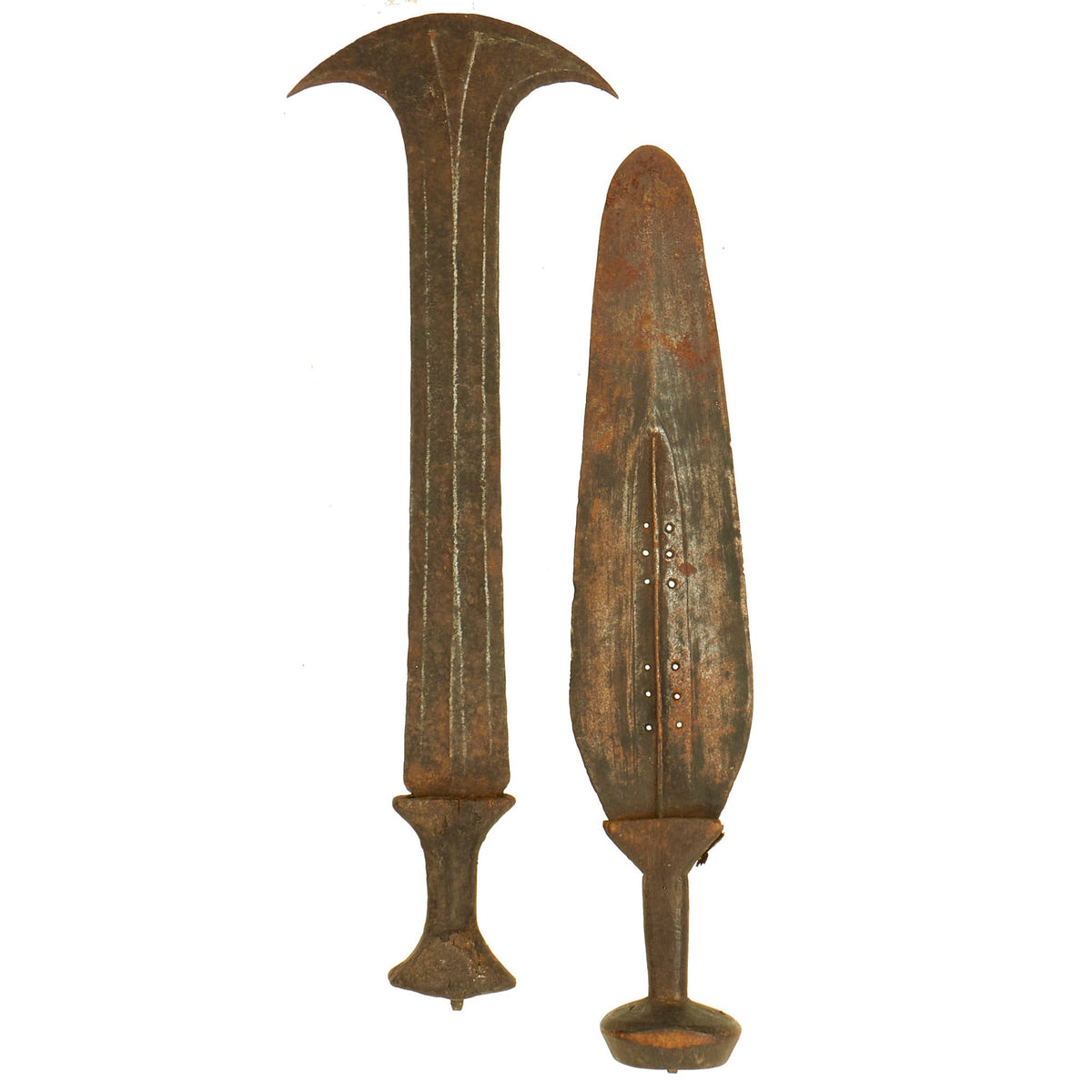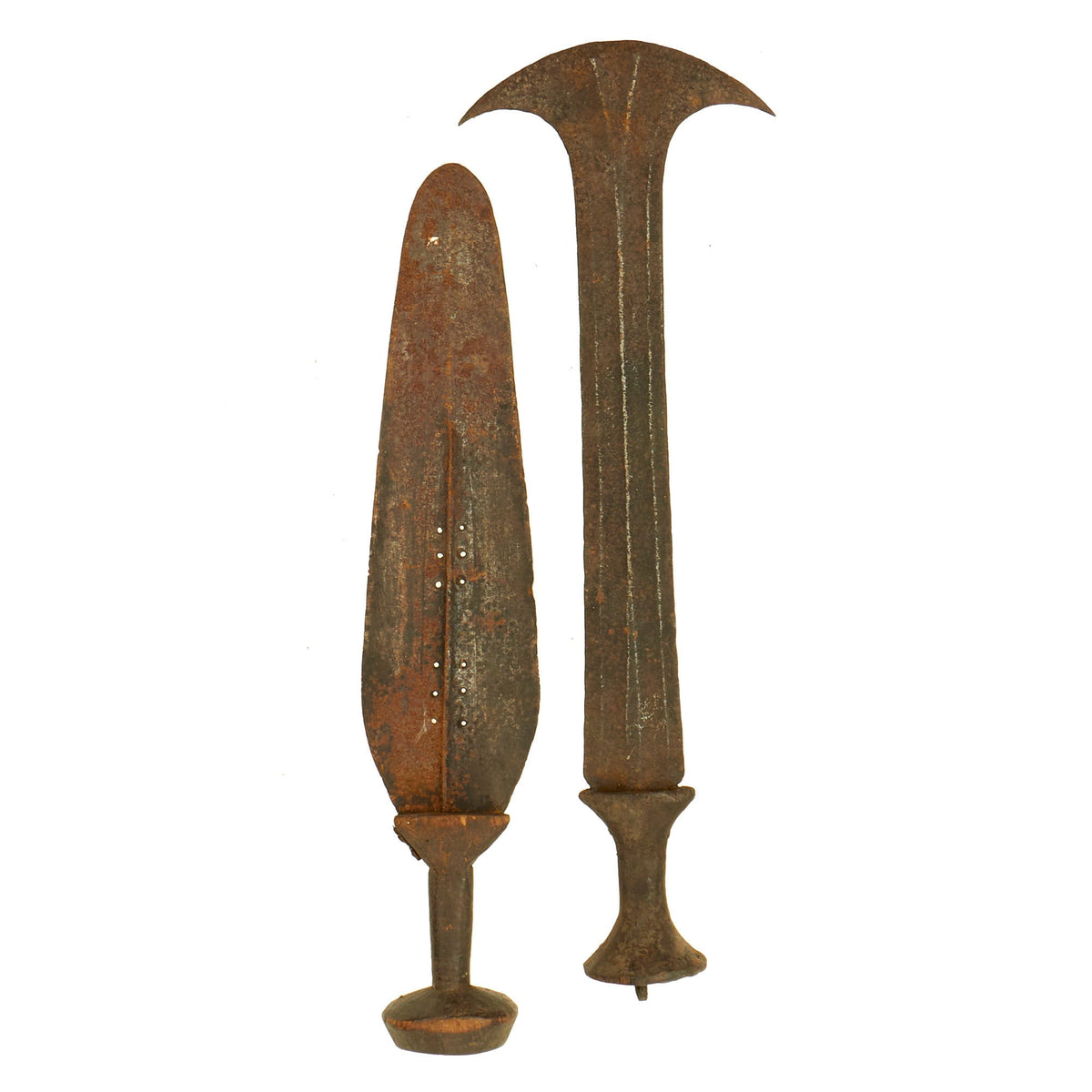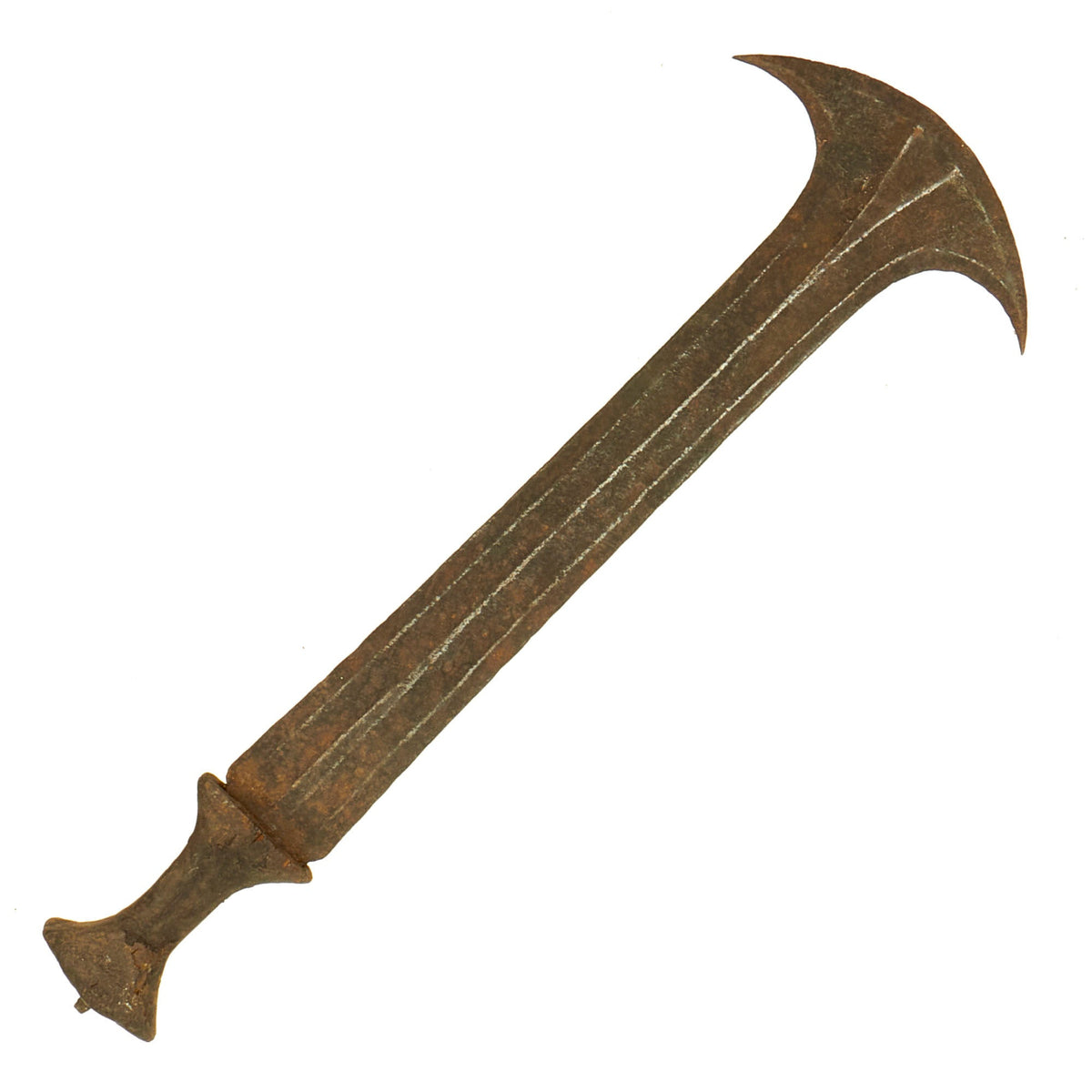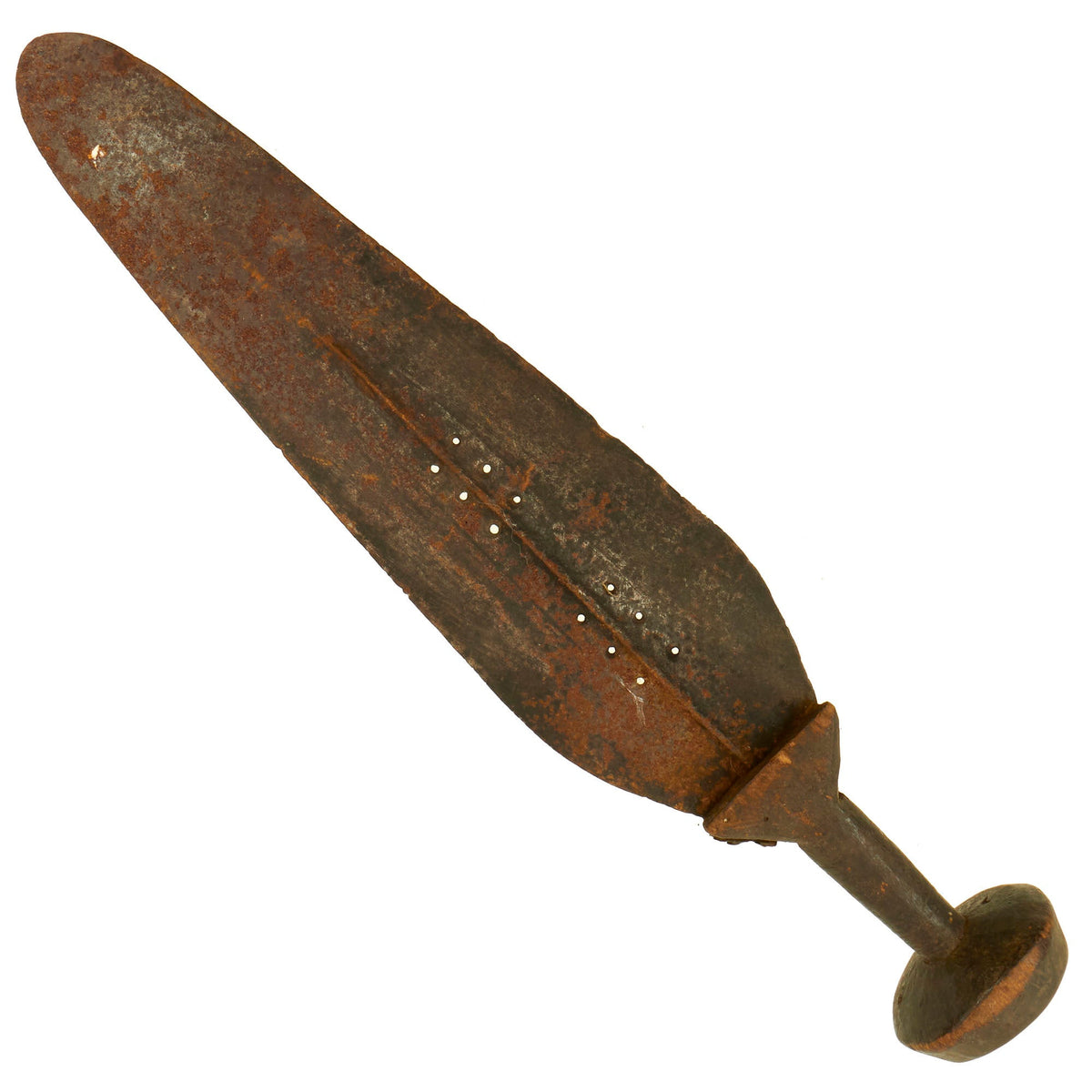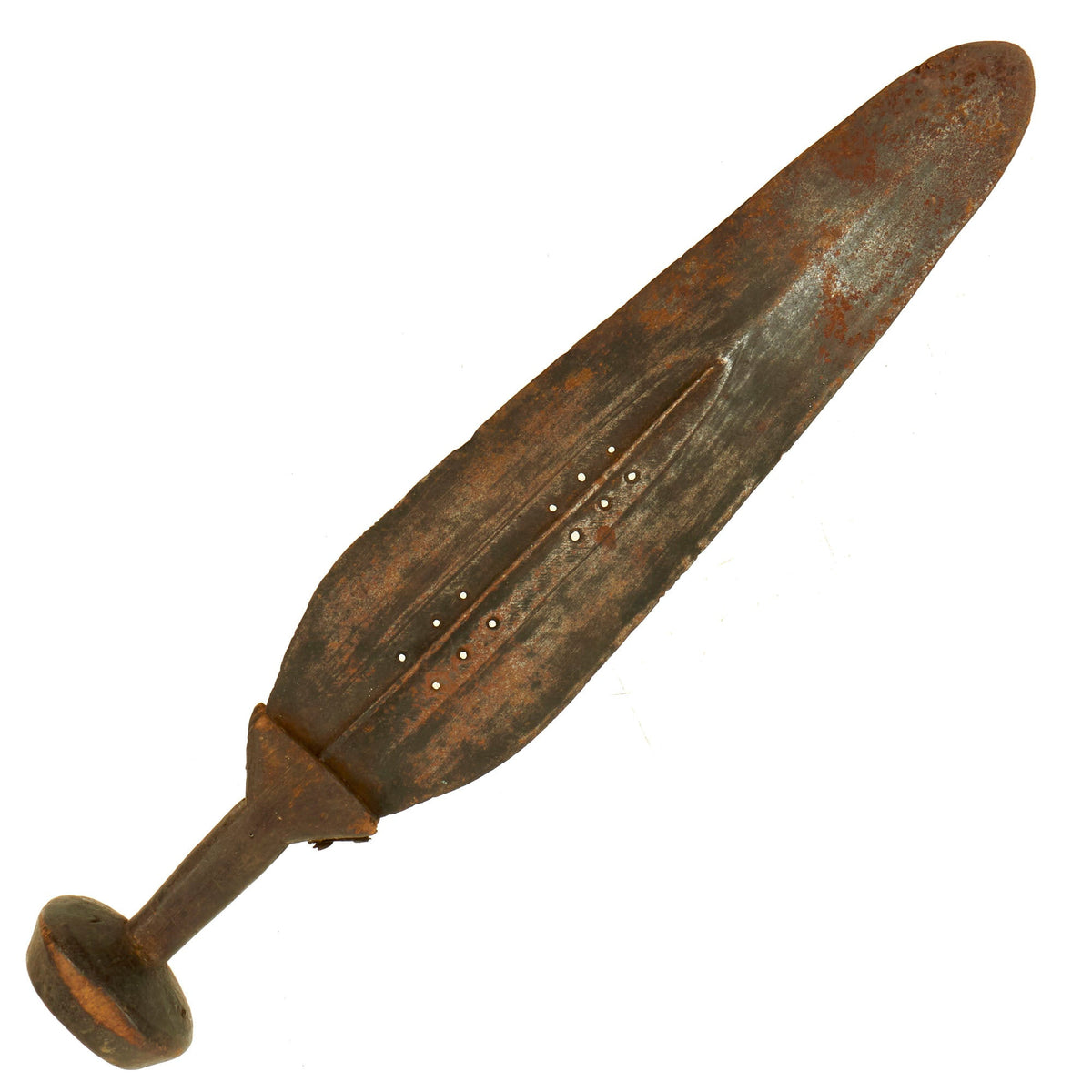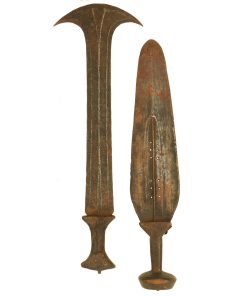Original African 19th Century Mongo People Ekonda Tribe Currency Knife Set – (2) Items Original Items
$ 395,00 $ 118,50
Original Items: Only One Set Available. IMA President Christian Cranmer recalls times when as a boy, his father used to tell him that when he was young, there really were Atlases that had “UNEXPLORED” and “UNKNOWN” printed right across the center of the Continent of Africa. Needless to say the European Powers, especially the British, were always looking for new areas where they could expand the empire. In the later half of the 19th century, they started many “Campaigns” of conquest and Empire building. They fought against indigenous peoples, who were armed with edged weapons for the most part.
This extraordinary Native fighting sword is a typical example. It is are quite unique to itself, coming from a world that had no contact with Europeans, and most likely little contact at all outside of the local area. In these areas, the power of the sword was everything but alas, no match for the breech loading rifles of the Europeans.
The knives in this set are in a lovely, aged mature condition showing many years of faithful use. They have surface oxidation, pitting and dried handles but are otherwise lovely display items. These knives are known as “currency” or “hoe knives”. The shorter / broader bladed knife measures 18″ overall, with a 13″ blade, and the knife with the flared blade measures 19 1/4″ overall with a 15 1/4″ blade.
Probably the most dramatic and certainly the most varied metal currency forms are objects believed to be derived from implements and weapons. Popularly known respectively as hoe money and throwing knives, these objects were fabricated from copper, bronze, brass and iron.
Hoe money came in the shape of a heart, spade, paddle, teardrop, trowel, anchor or blade. In fact, the shapes began to overlap with the objects classified as knives or blades. Hoe money varied in value but was most often used as bridewealth. It was also frequently re-formed into other objects or implements as needed.
Currency derived from the throwing knife also came in many shapes and sizes, but its distinctive feature is the complexity in the orientation and size of its blades. These flattened shapes, often very thin, posed technical challenges to the blacksmith that required considerable skill and craftsmanship. In addition, many of the throwing knives were elaborately decorated, some on the blades and others only on the handles. Throwing knives are reported to have been used for bridewealth. Other evidence suggests, however, that they were emblems of office or status, carried in dances or other ceremonial occasions, and not currency at all.
This set comes more than ready for further research and display.
Fast Shipping with Professional Packaging
Thanks to our longstanding association with UPS FedEx DHL, and other major international carriers, we are able to provide a range of shipping options. Our warehouse staff is expertly trained and will wrap your products according to our exact and precise specifications. Prior to shipping, your goods will be thoroughly examined and securely secured. We ship to thousands clients each day across multiple countries. This shows how we're dedicated to be the largest retailer on the internet. Warehouses and distribution centres can be located throughout Europe as well as the USA.
Note: Orders with more than one item will be assigned a processing date depending on the item.
Before shipping before shipping, we'll conduct a thorough inspection of the items you have ordered. Today, the majority of orders will be delivered within 48 hours. The delivery time will be between 3-7 days.
Returns
The stock is dynamic and we cannot completely manage it because multiple stakeholders are involved, including our factory and warehouse. So the actual stock may alter at any time. It's possible that you may not receive your order once the order has been made.
Our policy is valid for a period of 30 days. If you don't receive the product within 30 days, we are not able to issue a refund or an exchange.
You can only return an item if it is unused and in the same state as the day you received it. You must have the item in its original packaging.
Related products
Uncategorized
Uncategorized
Angolan Rebel 1970s era 60mm Inert Display Mortar from Angolan Civil War Original Items
Uncategorized
Uncategorized
Uncategorized
Uncategorized
Australian WWII Owen MK1 Machine Carbine SMG Custom Fabricated Replica with Sling Original Items
Uncategorized
Uncategorized
Uncategorized
Uncategorized
Uncategorized
Uncategorized
Uncategorized
Uncategorized
Uncategorized
